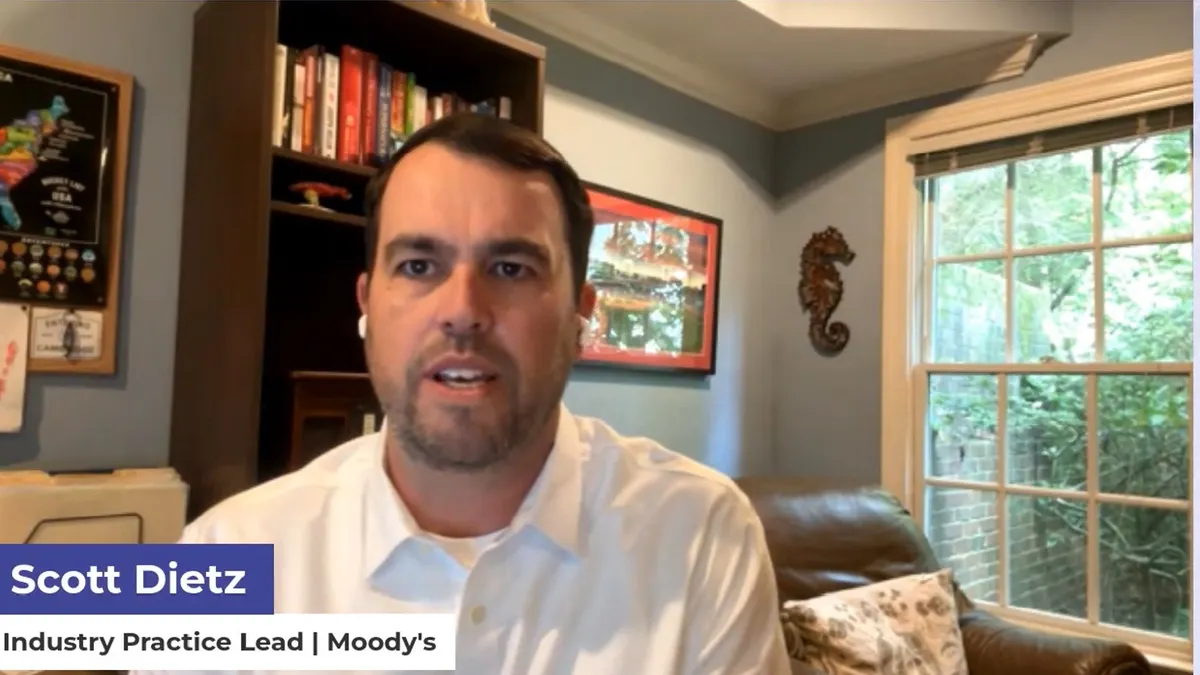Angel Lange is the CFO of Agiloft, a contract management software firm based in Redwood City, California. Views are the author’s own.
Finance departments have long been typecast as the ultimate gatekeepers — the department where “no” is the default response to any request that doesn't come with strong guarantees.
As CFO of Agiloft, I've been working to rewrite this narrative with a revolutionary approach that's transforming how finance can drive business growth — and I hope my fellow CFOs follow suit.
My guiding mantra — “help me find ways to say ‘yes’” — actually came from a mentor early in my career, and it represents a fundamental shift from traditional finance thinking. Instead of immediately identifying why something can't be done, I work to focus on understanding what needs to happen to make it possible. This philosophy doesn't mean abandoning fiscal responsibility but engaging more deeply with business requirements to find creative, financially sound solutions, and I champion my team to do the same.
When someone comes to us with a request, our first question isn't 'why do you need this?' but rather 'what are we trying to achieve together?'’ I often challenge requestors to “think like an owner” — to approach decisions with a mindset grounded in long-term impact. This small shift in perspective opens up entirely different conversations and often leads to better outcomes for the company as a whole and our financial health, as well as the team as colleagues feel heard and know their ideas are being taken to heart.
This approach has proven particularly valuable in a high-growth environment, where gatekeeping could easily stifle the innovation and agility that drives company success. By positioning finance as a strategic partner rather than an obstacle, you can create an environment where teams feel empowered to think bigger while maintaining the financial discipline necessary for sustainable growth.
Walking the cost control tight rope
The challenge of balancing cost control with business enablement is where this philosophy truly shines. Rather than viewing these as opposing forces, we treat them as complementary objectives that require sophisticated financial modeling and creative problem-solving.
For instance, when the sales team requests expanded territory coverage that would require significant headcount investment, traditional finance might have simply calculated the cost and either approved or denied the request. Instead, our team worked with sales leadership to model different scenarios, exploring questions like: What if we started with partners? Could we phase the rollout to minimize risk? What metrics would indicate success at each stage and how do we ensure we’re hitting these milestones?
We bring the same approach to product initiatives. Rather than evaluating roadmap initiatives solely by immediate ROI, we collaborate with product leadership to understand broader strategic value. We provide the financial reasoning behind whether an initiative makes sense to accelerate time-to-market for decisions like major investments and backing acquisitions. Doing so helps the company prioritize the right bets and structure them in ways that support innovation while protecting financial health.
When the finance team is embedded early — as a thought partner rather than a late-stage checkpoint — we unlock better outcomes and faster decisions, and are more aligned for growth.
Using ‘yes’ to unlock growth
The yes-first mantra is instrumental in supporting growth trajectory. We've consistently expanded our market share in the competitive contract management space, and much of this success can be attributed to the financial agility that this philosophy enables.
One notable example involved our work supporting product strategy — and initiatives that required investment in both R&D and go-to-market enablement. Traditionally, this level of investment might have triggered months of analysis, long approval cycles, and a fair amount of internal hesitation. Instead, by collaborating with product, engineering, and marketing, we built a flexible framework that allowed for rapid market entry with built-in financial guardrails.
We established clear success metrics and checkpoints that allowed us to move quickly while maintaining financial discipline. The key was building trust with our business partners, so they knew we were genuinely looking for ways to support their goals, not just protect our budgets.
This has enabled us to capitalize on market opportunities that might have been missed under a more restrictive financial framework, contributing significantly to our revenue growth and market expansion, and ultimately delivering a product that not only met customer needs but became a key differentiator in our platform.
Hiring smart, empowering teams
Central to my success is my commitment to hiring people smarter than myself and empowering them as subject matter experts. This philosophy extends throughout my finance organization, where team members are encouraged to develop deep expertise in specific business areas and act as strategic advisors rather than just number-crunchers.
I don't necessarily want my team to think the same way as me –– I need them to be experts who can see opportunities and challenges that I might miss. When you hire smart people and give them the authority to make decisions, you create a finance organization that can truly drive business value.
In return, you create a finance team that business leaders actively seek out for strategic discussions, rather than avoiding until absolutely necessary. That’s why it’s essential to encourage your team members to regularly participate in product planning sessions, market analysis discussions, and strategic planning meetings — not just to provide financial input, but to contribute genuine business insights.
Collaborative M&A dealmaking
My collaborative philosophy was perhaps most evident during Agiloft's recent acquisition of Screens, a complementary technology platform. Rather than approaching the acquisition as a purely financial transaction, my team worked closely with all stakeholders to ensure the deal would create genuine value for customers, employees and shareholders alike.
Acquisitions can easily become all about financial engineering rather than business building. Our job was to find ways to say “yes” to a deal structure that would support the combined companies’ growth objectives while maintaining financial prudence.
My team's collaborative approach helped identify synergies that might have been overlooked in a more traditional due diligence process, and our ongoing partnership with integration teams has been crucial in realizing the acquisition's full potential.
Shifting from gatekeeper to enabler
This approach represents what I believe is a broader evolution in how finance leaders can contribute to business success. By shifting from gatekeeper to enabler, finance departments can become genuine growth drivers rather than necessary constraints.
For other finance leaders looking to adopt similar approaches, I recommend starting with small wins that demonstrate finance's value as a strategic partner, then gradually expanding the scope of collaboration as trust builds throughout the organization. The key is proving that saying “yes” doesn't mean abandoning financial responsibility — it means finding smarter ways to achieve business objectives.
The companies that will succeed in today's environment are those that can move quickly while maintaining strategic discipline. Finance has a unique opportunity to be the function that makes both possible — but only if we're willing to say “yes” to a fundamentally different way of thinking about our role.





















